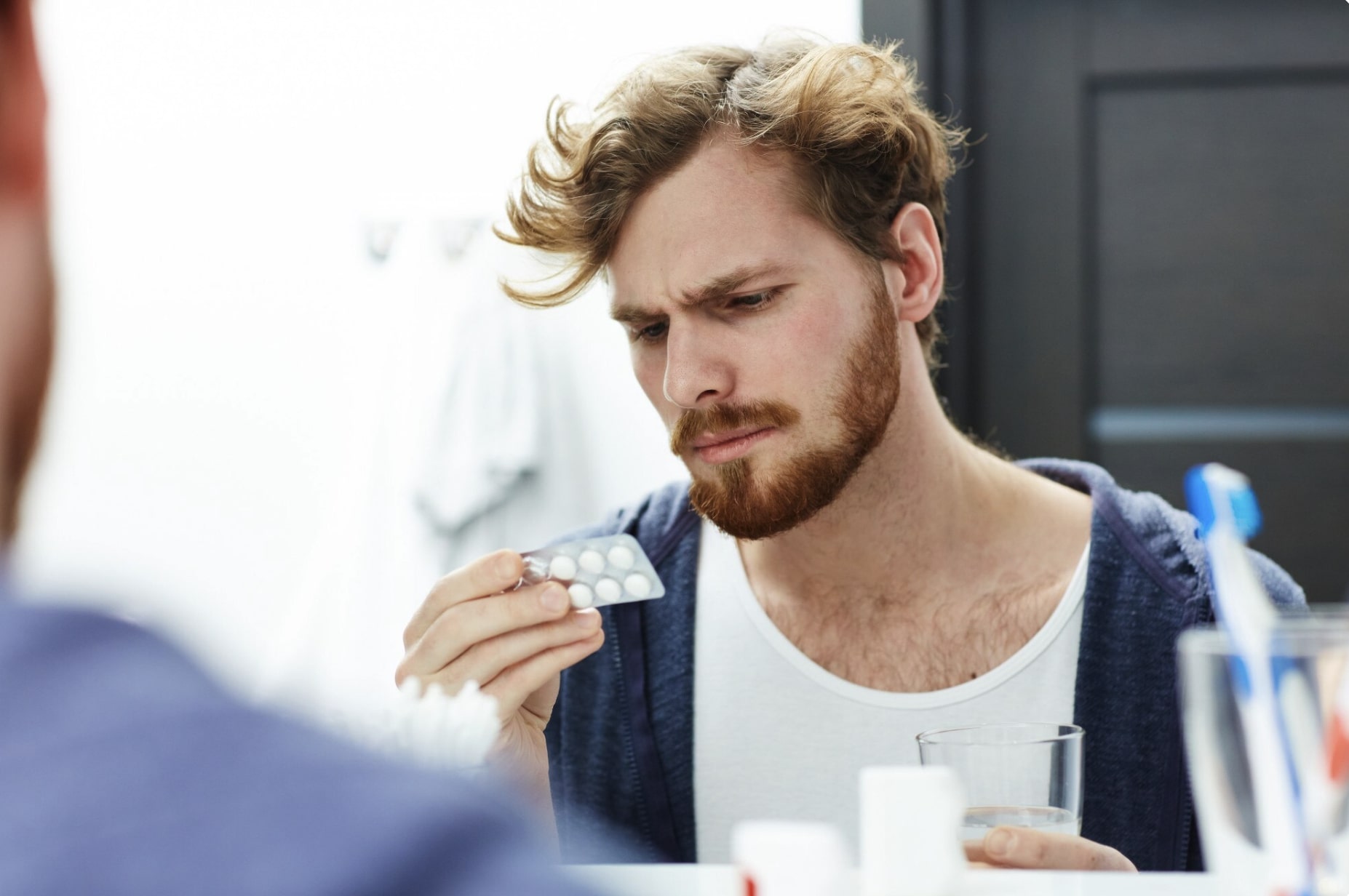An increasing number of men are experiencing testosterone deficiency – a condition often referred to as “low T.” Recent research suggests that testosterone levels may decrease as rapidly as 2% annually after the age of 30.1 Further findings have shown that the prevalence of low T is as high as 38.7% in men ages 45 or older.2
Naturally, this has led to a surge in physicians, specifically endocrinologists, prescribing a special type of treatment protocol called testosterone replacement therapy (TRT). As research progresses, the medical and scientific communities are gaining a much clearer grasp of how testosterone levels influence longevity and well-being. Trained men’s health physicians are now well-educated on how to administer prescription testosterone in a safe and effective manner.
But what is TRT? How does TRT work? What are the benefits (and risks) of TRT?
This article will answer those questions and provide a concise overview of TRT to get you up to speed on this type of hormone replacement therapy. For more information, please visit our Low T page or find more information on our home page.
WHAT IS TRT?
Testosterone replacement therapy (TRT) is a unique type of hormone replacement therapy designed to restore healthy testosterone levels in someone who suffers from low T. TRT is actually quite similar to the use of insulin in type-I diabetics; the body is lacking endogenous production of a necessary hormone, so it needs to be “replaced” with an exogenous source.
In the case of TRT, this means using exogenous testosterone (generally prescribed as an injection) to bring testosterone levels back to a healthy range. Other forms of testosterone prescriptions exist as well, such as testosterone patches and testosterone creams (both of which are absorbed through the skin instead of being injected).
While the majority of males on TRT are over the age of 50, younger men are taking action into their own hands and having their testosterone levels checked these days. We strongly encourage this if you are experiencing symptoms of low T, which we will cover later in this article.
Testosterone was initially synthesized in a lab setting in 1935 and has been used in clinical applications ever since.3 Over the last decade, testosterone has become one of the most widely prescribed medications across the United States.1
Many factors are responsible for the rise of TRT and men being diagnosed with low T, particularly the growing population of males over 50 years of age. Scientists and physicians also have a better understanding of the pathophysiology of testosterone deficiency nowadays.
LOW T (TESTOSTERONE) SYMPTOMS
The symptoms of low T are typically a negative impact on overall well-being and health. Men who are testosterone deficient also find that their symptoms tend to get worse with time, which starts to drastically lower quality of life and reduce motivation to get out of bed in the morning.
Here are the most common symptoms of low T that men experience:
- Decreased libido/sex drive
- Erectile dysfunction (impotence)
- Low energy throughout the day
- Loss of muscle mass and strength
- Increase in body fat
- General depression
- Small or shrinking testes
- Poor concentration (brain fog)
- Infertility
- Hot flashes
- Low red blood cell count (anemia)
- Brittle bones and general weakness
- Hair loss (particularly body hair)
- Sleep apnea (or other sleep disorders)
If you’re experiencing any (or all) of these symptoms, you may be a candidate for TRT. However, it’s necessary to confirm your testosterone levels through blood work before you make any decisions.
The trained physicians at Gameday Men’s Health will help guide you through the process of checking your testosterone levels and determining if you should consider TRT.
HOW DOES TRT WORK?
Now that we answered the “what is TRT” question, you’re probably curious how TRT works. In short, TRT works by giving your body the testosterone it needs to function properly. Testosterone is the primary androgen in males (and females) and has an impact on many biological processes that are necessary for health and longevity.
For example, low T is associated with an increased risk of type-2 diabetes, metabolic syndrome, cardiovascular disease, and a myriad of other debilitating health conditions.4
Having low T also makes it significantly harder to build (and retain) muscle mass, since testosterone is a potent anabolic hormone and directly impacts muscle protein synthesis.5
Intuitively, if your body doesn’t produce enough testosterone on its own, your health will start to suffer until you fix the issue. Thus, TRT works by bringing your body back to a healthy range for testosterone, which then slowly begins to reverse the symptoms of low T.
Once a steady baseline dose of testosterone has been established on TRT, most men notice an improvement in their energy levels, vitality, and quality of life. However, TRT isn’t an overnight remedy, and some men won’t notice any beneficial changes until 1-2 months have passed.
Again, be sure to do this all under the guidance of a trained physician specializing in TRT, like those at Gameday Men’s Health. Testosterone is a controlled substance in the United States (and many other countries), so you will need a prescription to use it legally.
WHAT ARE THE BENEFITS OF TRT?
TRT can benefit individuals with low T in a multitude of ways, it’s just a matter of giving the testosterone time to restore balance (i.e., homeostasis) in the body.
If you’re just beginning TRT, don’t get too far ahead of yourself; the benefits of TRT aren’t going to happen right away. This is not to say you won’t notice improvements in the short-term, but rather that TRT is not a “quick-fix” like some people believe it to be.
However, TRT has a high success rate in males with low T and is a practical long-term solution to an otherwise debilitating endocrine dysfunction.
The short-term benefits of TRT may include:
- Heightened libido/sex drive
- Better erectile quality
- Improvement in energy levels and cognitive function
- More vitality, motivation, and confidence throughout the day
- Healthier appetite regulation
- Improved sleep quality
After several months of TRT, many patients experience:
- More efficient lean body mass (as part of a diligent weight training regimen)
- Enhanced recovery after exercising
- Fuller facial hair growth
- Better bone and joint health
- Increase in red blood cell production
- Improved immune function
It’s important to remember that TRT is not a one-size-fits-all treatment protocol; some men will respond to testosterone more quickly than others. Again, your mindset should be on the long-term results of TRT as opposed to the quick-fix mentality that many men seem to have.
WHAT ARE THE RISKS OF TRT?
Much like any prescription medication, testosterone can bring about some side effects after continuous use. Thankfully, the side effects of TRT are relatively benign since the goal is to keep testosterone levels in a healthy range. If your testosterone levels get too high on TRT, your doctor should adjust the dose of testosterone accordingly.
Testosterone seems to have a poor reputation in modern society, as many people assume it produces serious side effects and “roid rage,” which is simply not the case when small doses are used (as is the case on TRT). Intuitively, if you take large amounts of testosterone (e.g., for physical performance enhancement), there is definitely a greater risk of harmful side effects, such as gynecomastia, infertility, and high blood pressure.
On the contrary, the risks of TRT are fairly limited. Some men may notice they have oily skin, body hair growth (back and chest), and testicular shrinkage after being on TRT for a period of time. These side effects are manageable in the majority of cases and may even fade as the body adjusts to TRT.So, why do the testicles tend to shrink when a man takes testosterone? The body regulates its production of testosterone through a negative feedback loop mechanism involving the hypothalamus, pituitary gland, and gonads (testes) – known as the HPG axis. In healthy individuals, the pituitary gland secretes luteinizing hormone (LH) which communicates to the testes to produce testosterone, and this keeps testosterone levels in a normal range.
When you start providing your body with testosterone directly, the negative feedback loop acts as a “shutdown” mechanism of your body’s HPG axis since you’re getting all the testosterone you require through an exogenous (medicinal) source. In other words, your body doesn’t need to synthesize testosterone since it’s being “replaced” through TRT.
As a side effect of this, your testicles can shrink in size since less LH is being produced; thus, testosterone synthesis in the testes decreases. You may also experience a reduction in sperm counts, which can be an issue if you’re trying to have children.6
Thankfully, there are ways to work around these side effects of TRT. Keeping your skin clean with daily showers, grooming, and using various topical skincare products can help manage acne and excessive body hair growth. In addition, adding human chorionic gonadotropin (HCG) – an analog of luteinizing hormone – to TRT can help maintain fertility and testicular size.
However, don’t make any changes to your TRT protocol or the medications you take without first consulting with your physician.
TRT KEY TAKEAWAYS
TRT is a safe and effective form of hormone replacement therapy commonly used to treat males with low T. If the body isn’t producing sufficient testosterone, TRT can help restore testosterone levels to a healthy range.
If you suspect you have low T based on the symptoms described in this article, you should take the necessary steps to have your testosterone levels checked through a blood test. Remember, testosterone is the primary “male” hormone. TRT is often a life-changing protocol with definitive benefits in men with low T.
If you’re interested in learning more about what TRT entails and what to expect, check out our Man’s Guide to TRT!
REFERENCES
- McBride, J. A., Carson III, C. C., & Coward, R. M. (2016). Testosterone deficiency in the aging male. Therapeutic advances in urology, 8(1), 47-60.
- Mulligan, T., Frick, M. F., Zuraw, Q. C., Stemhagen, A., & McWhirter, C. (2006). Prevalence of hypogonadism in males aged at least 45 years: the HIM study. International journal of clinical practice, 60(7), 762-769.
- Hoberman, J. M., & Yesalis, C. E. (1995). The history of synthetic testosterone. Scientific American, 272(2), 76-81.
- Seal, L. J. (2009). Testosterone replacement therapy. Medicine, 37(9), 445-449.
- Brodsky, I. G., Balagopal, P., & Nair, K. S. (1996). Effects of testosterone replacement on muscle mass and muscle protein synthesis in hypogonadal men–a clinical research center study. The Journal of Clinical Endocrinology & Metabolism, 81(10), 3469-3475.
- Dohle, G. R., Smit, M., & Weber, R. F. A. (2003). Androgens and male fertility. World journal of urology, 21(5), 341-345.











